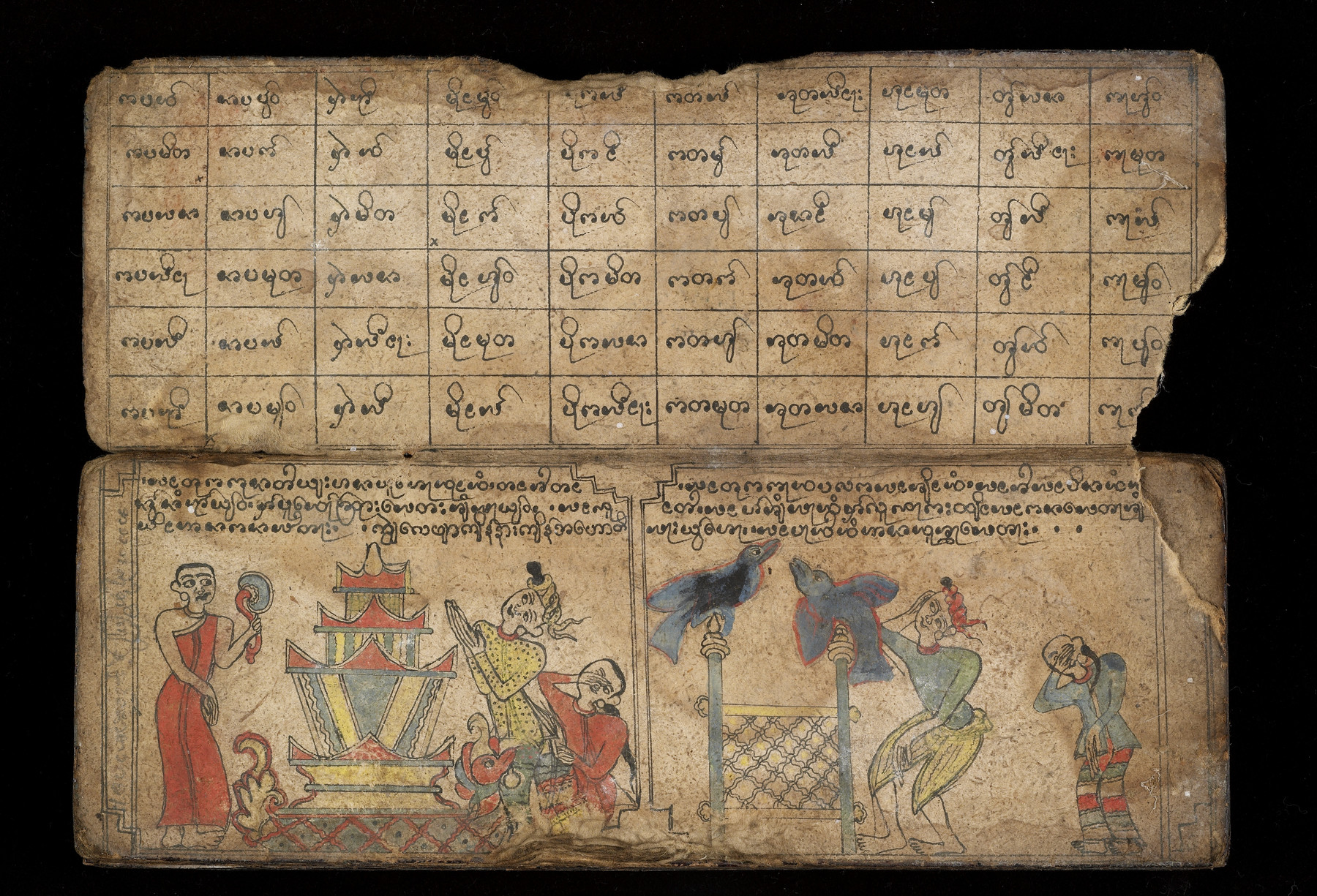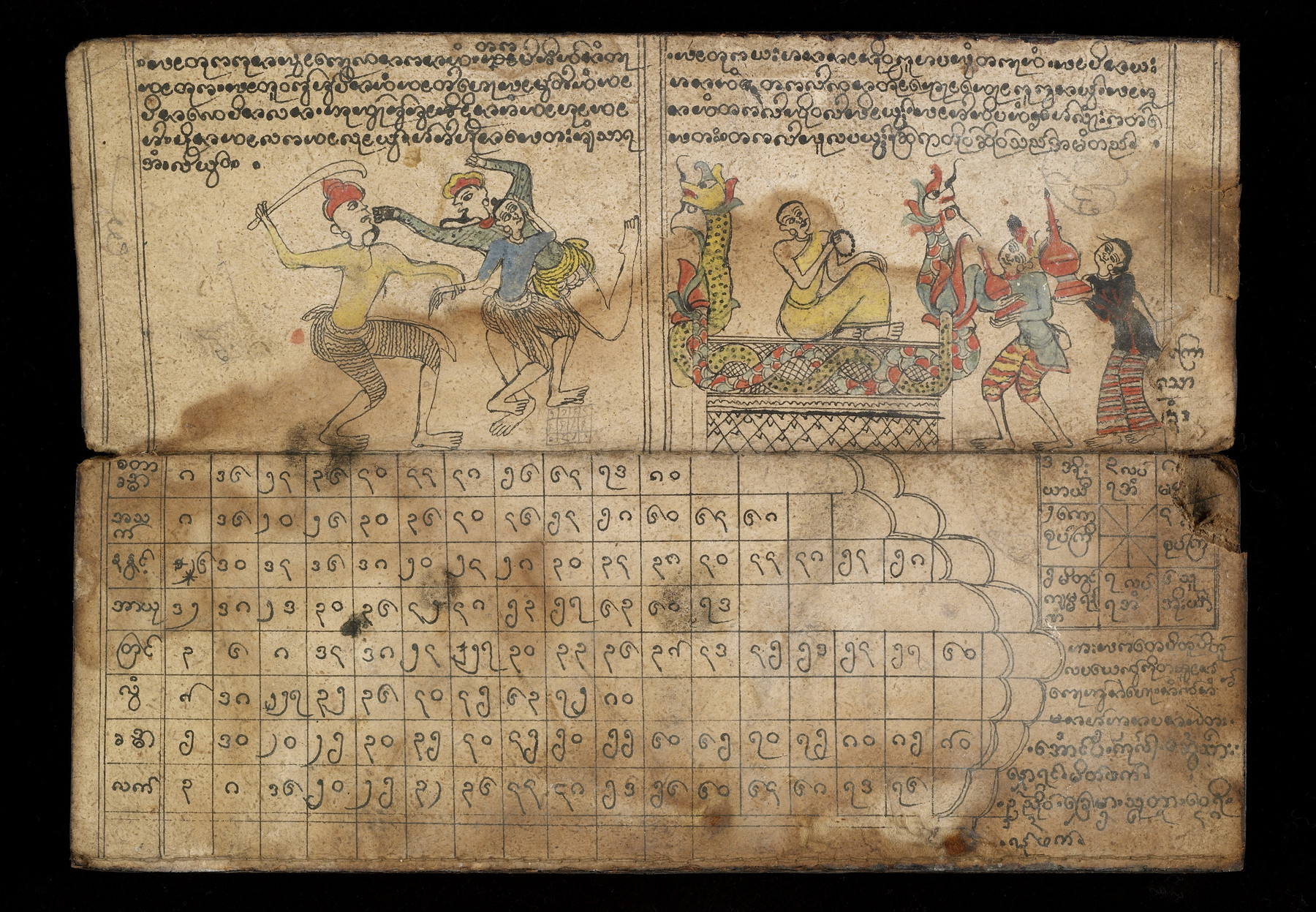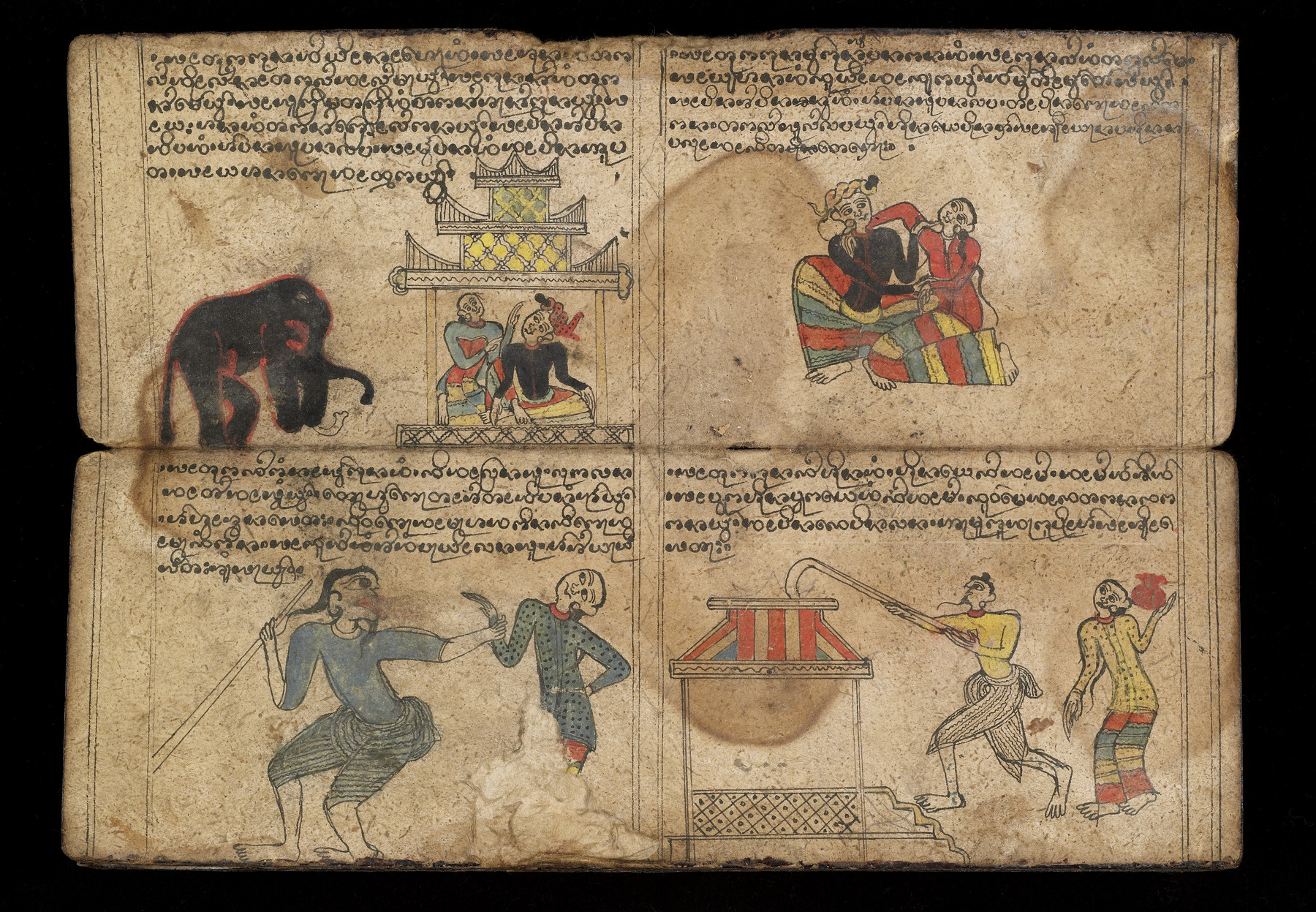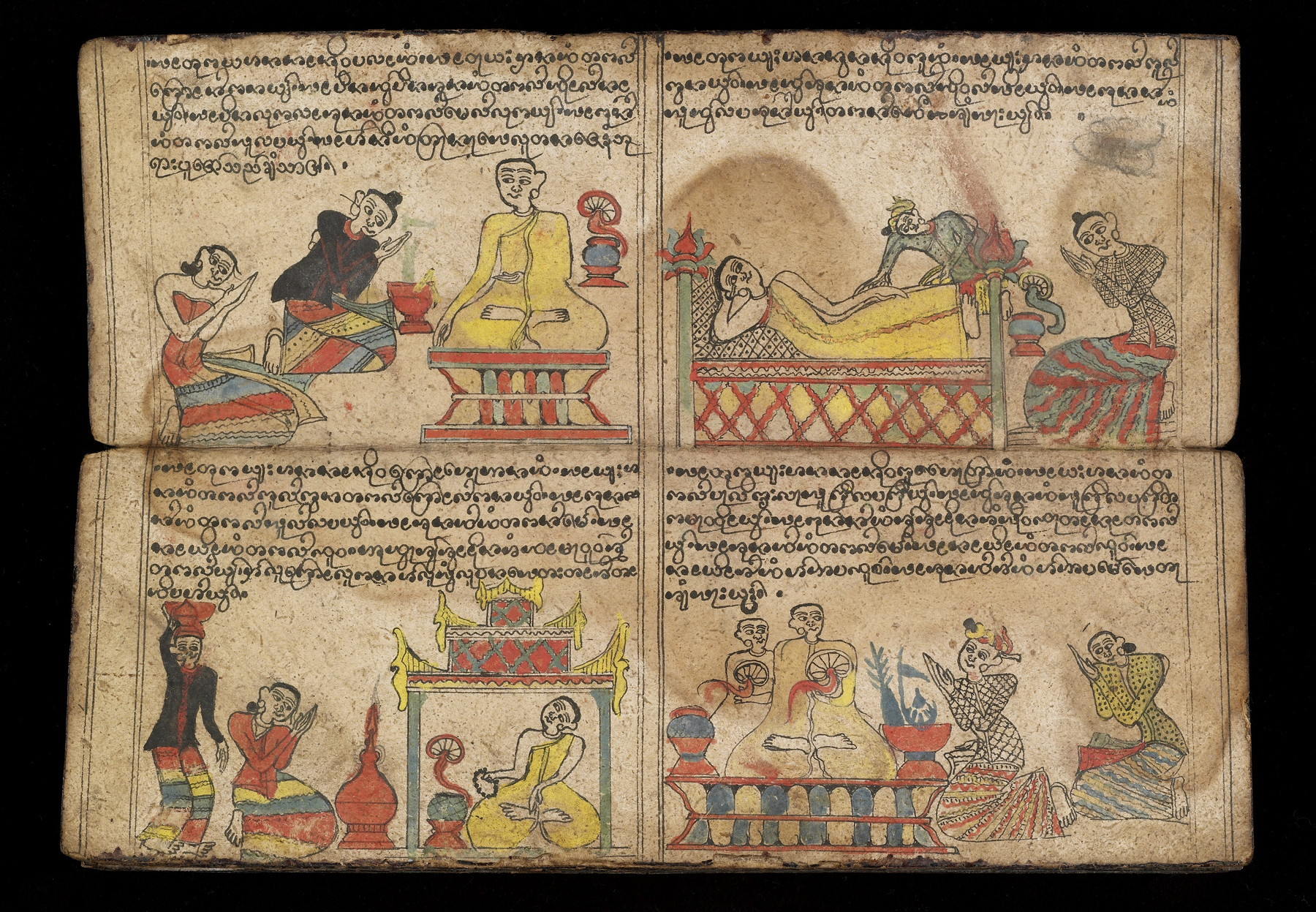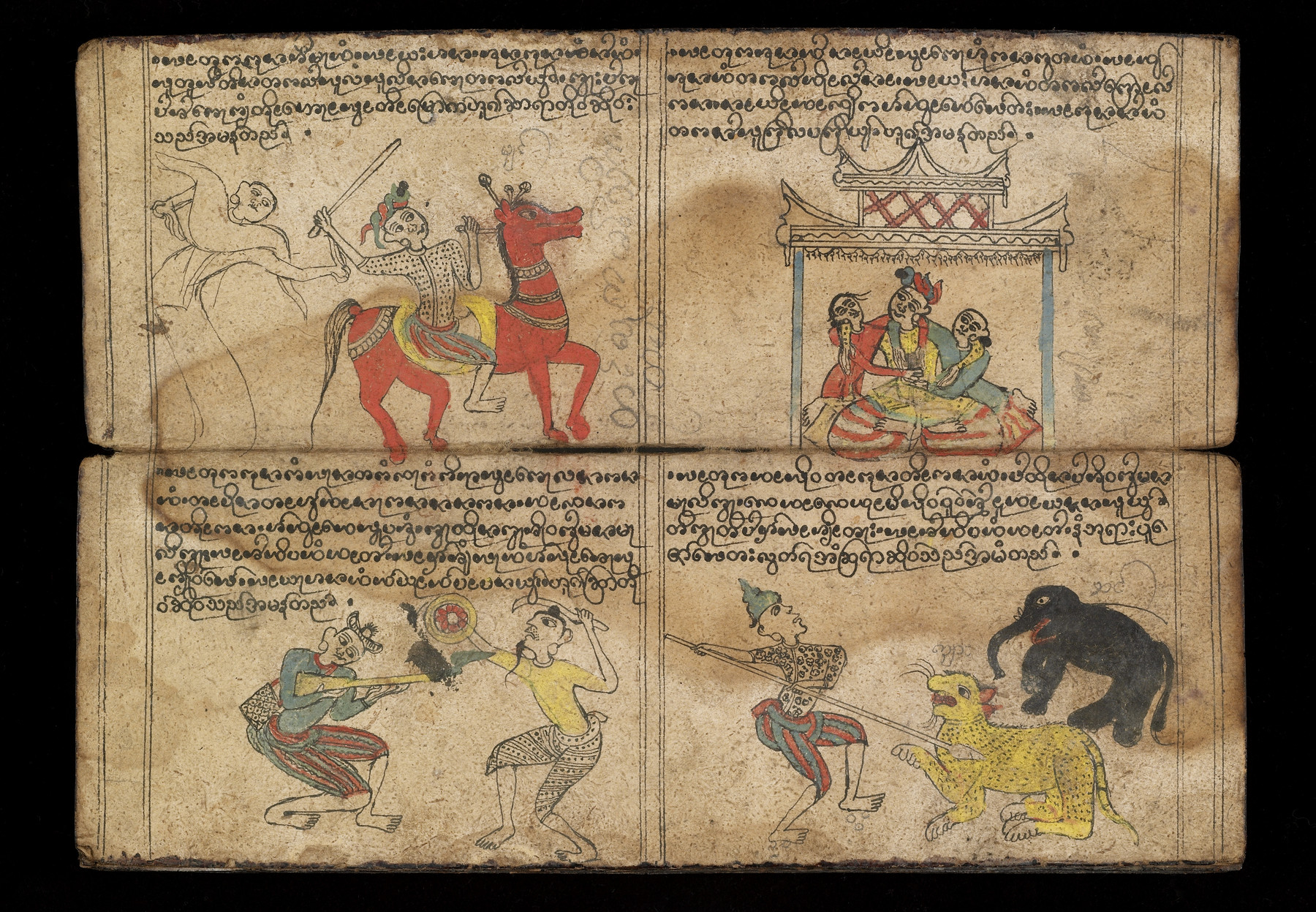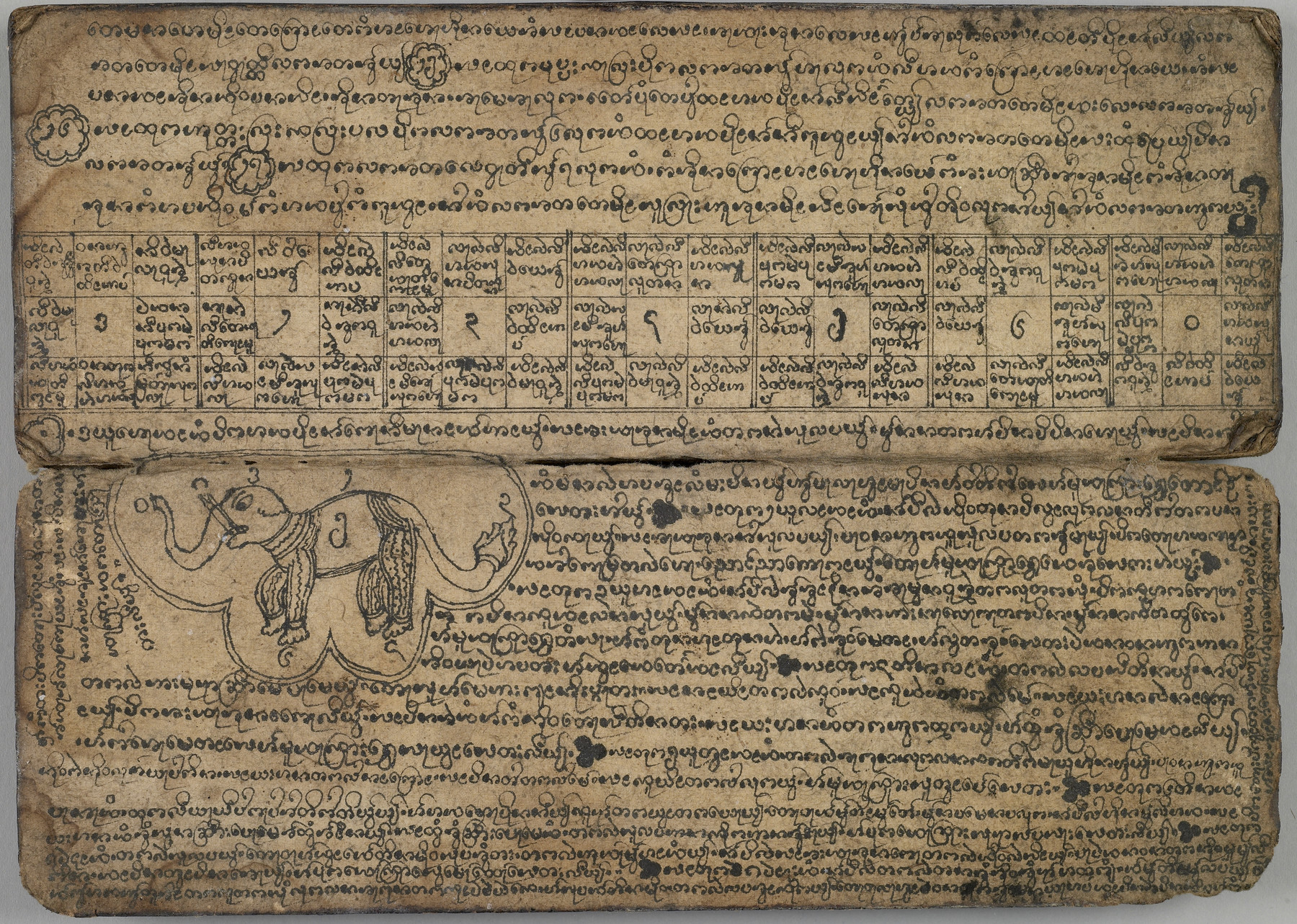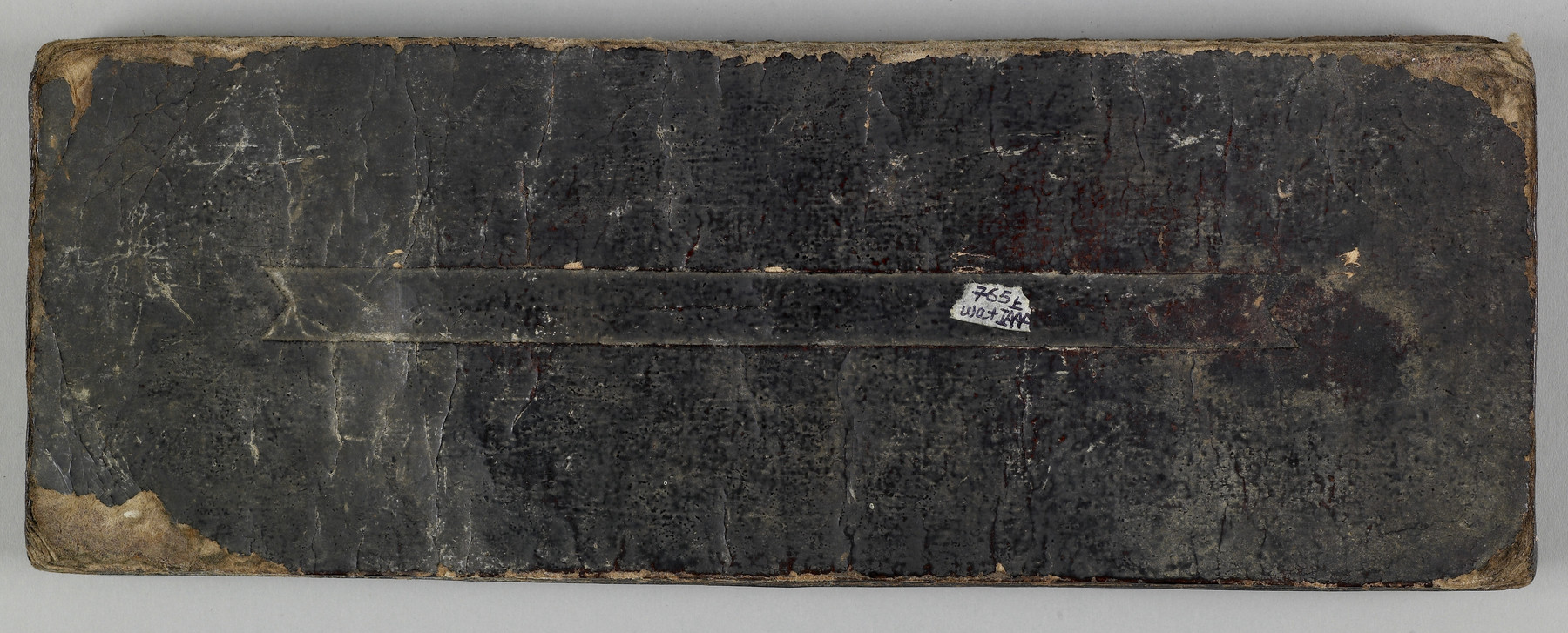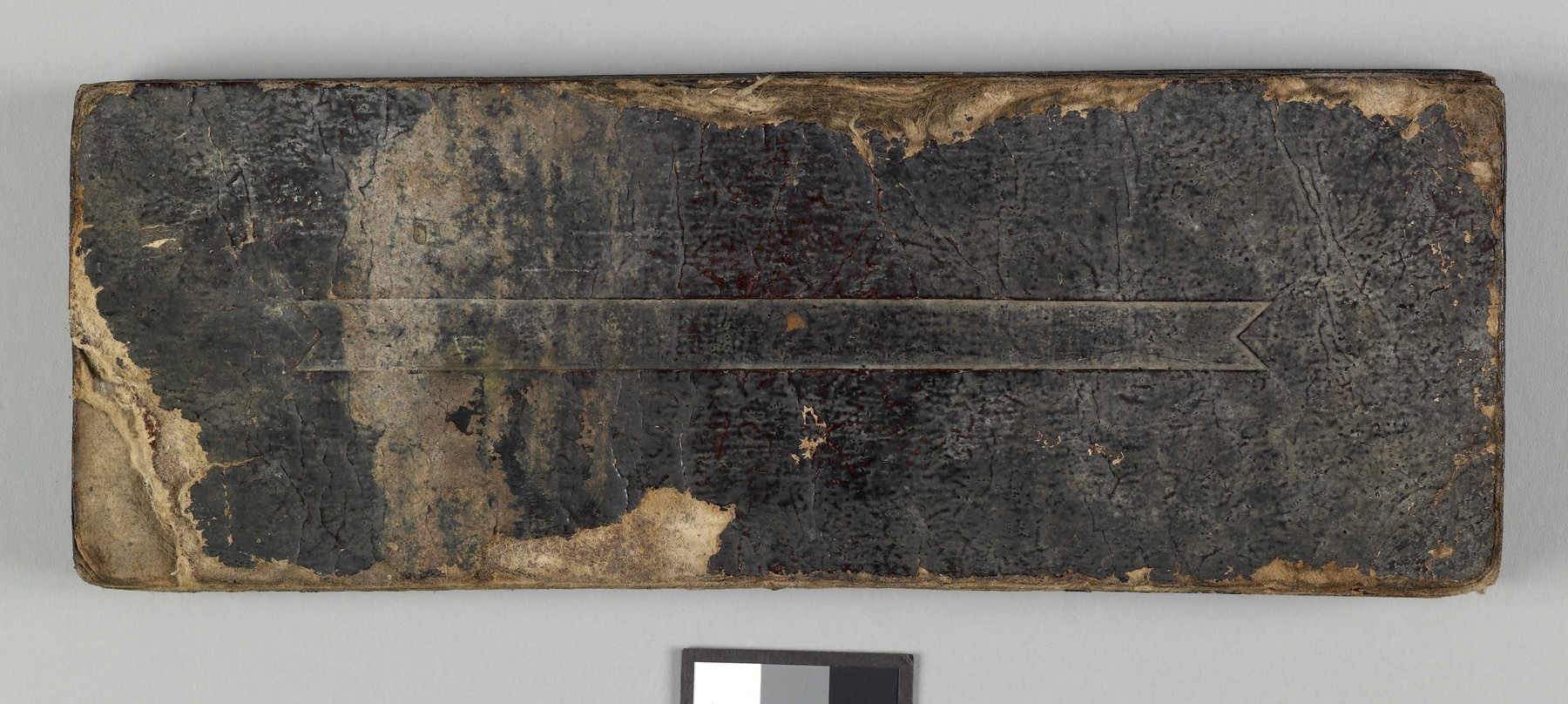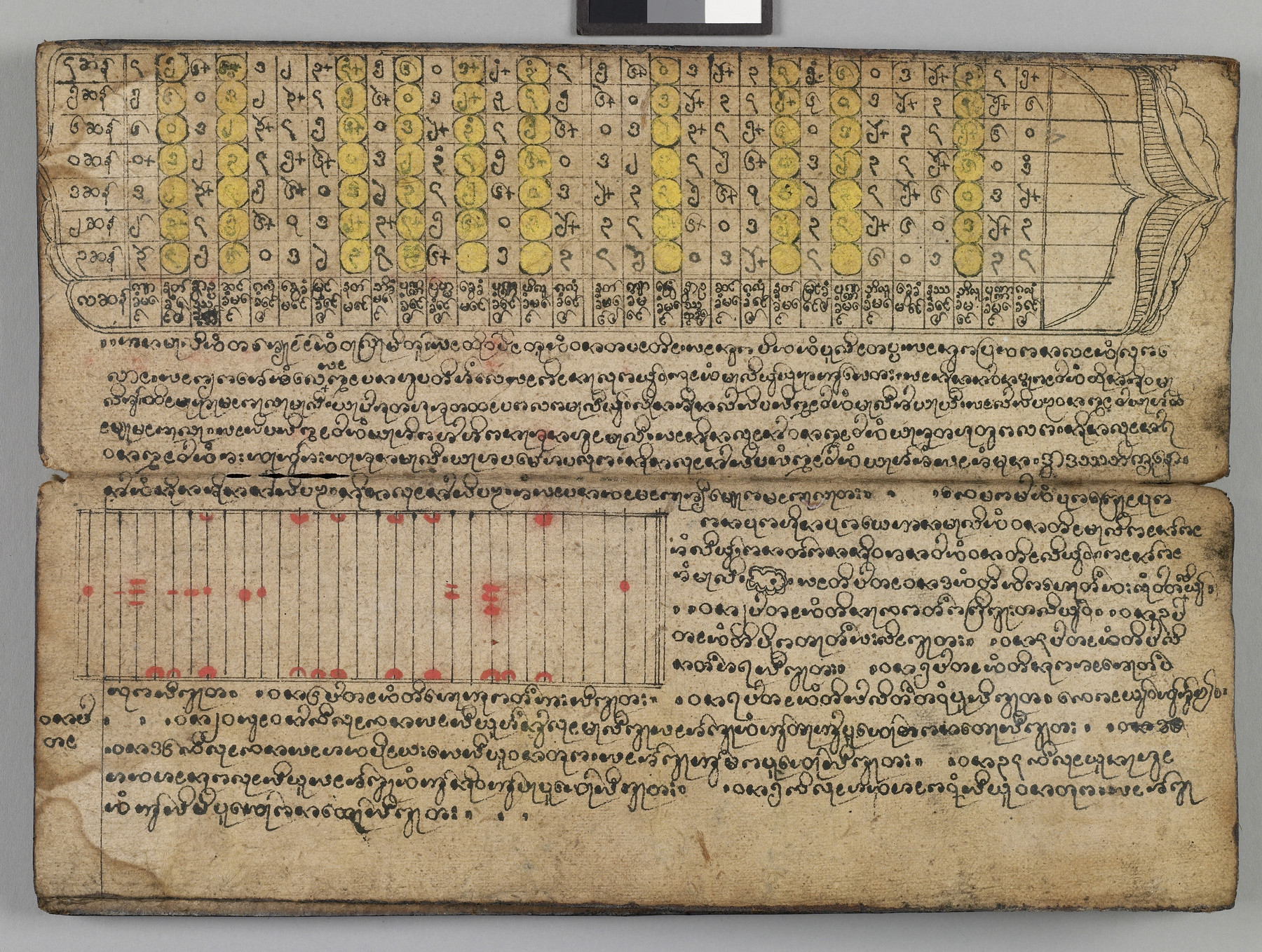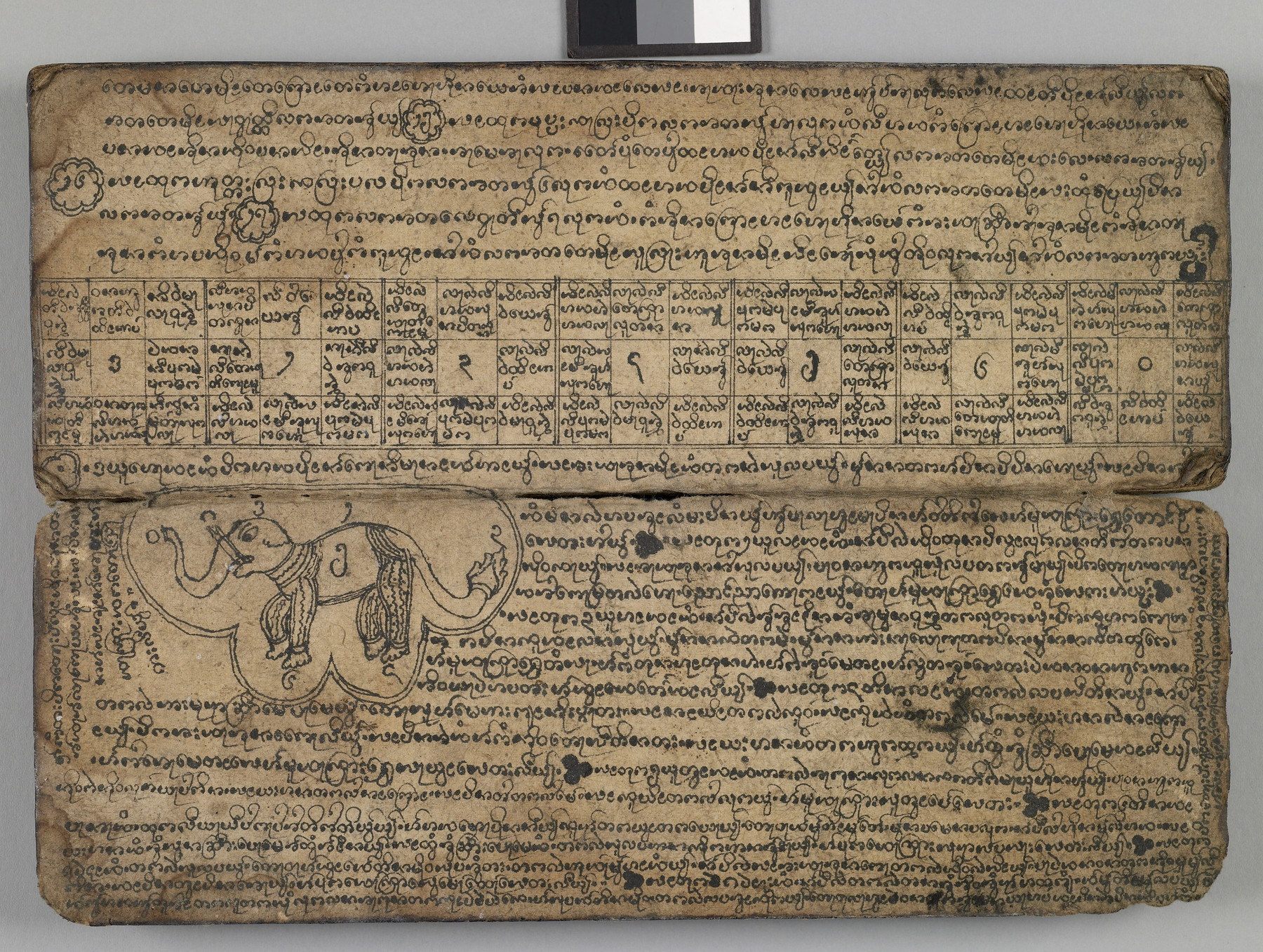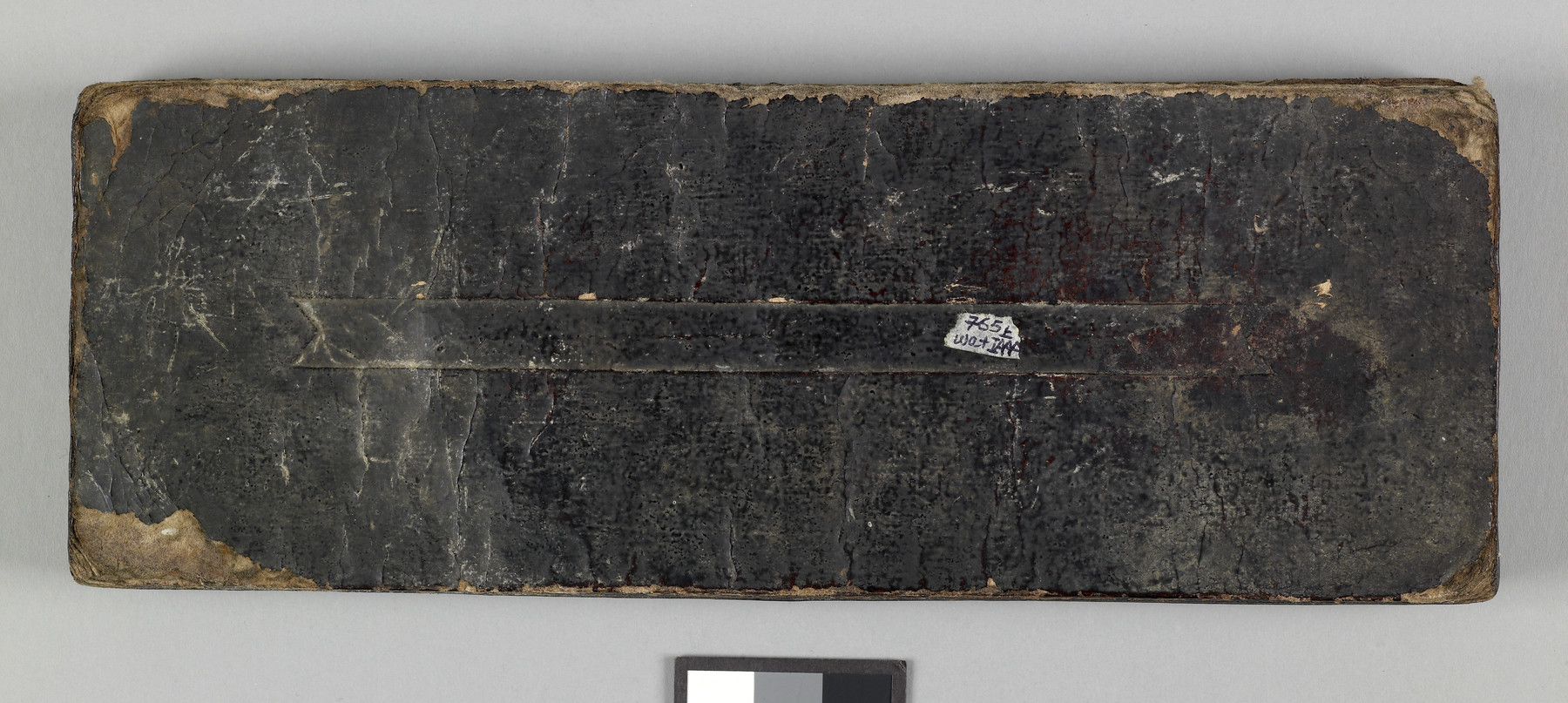Divination Manuscript
(India, Nepal, and Tibet, Manuscripts and Rare Books)
This accordion-folded, illustrated manuscript was most likely produced in the culturally Tai regions of Northeast India or Northern Myanmar (Burma). A compilation of several texts, it is partly in Burmese script and partly in Tai (also called Lik Tai). It begins with a Burmese script recording a Pali language Buddhist formula that is repeated on most Tai books of this type. Other passages are also quite clearly Buddhist in nature, so it is likely a series of religious fragments brought together in a single volume and then copied. It largely written in Lik Tai with occasional Burmese phrases seamlessly incorporated into the text. It also includes a diagrammatic representation of the pre-Buddhist Tai calendar, diagrams suggestive of divination, and several illustrations representative of Tai style painting of the nineteenth century.
Provenance
Provenance (from the French provenir, 'to come from/forth') is the chronology of the ownership, custody, or location of a historical object. Learn more about provenance at the Walters.
Purchased by Dr. Pratapaditya Pal [1]; Sale, Christie's, New York, March 20 2008, lot 401; purchased by Michael de Havenon, New York, 2008; given to Walters Art Museum, 2016.
[1] From a book dealer in northeast India
Conservation
| Date | Description | Narrative |
|---|---|---|
| 1/24/2017 | Examination | examined for acquisition |
Geographies
Myanmar
(Place of Origin)
India (Place of Origin)
Measurements
H: 4 3/4 x W: 13 1/2 x D: 1 3/16 in. (12 x 34.3 x 3 cm)
Credit Line
Gift of Michael and Georgia de Havenon in memory of Henry Ginsburg, 2016
Location in Museum
Not on view
Accession Number
In libraries, galleries, museums, and archives, an accession number is a unique identifier assigned to each object in the collection.
In libraries, galleries, museums, and archives, an accession number is a unique identifier assigned to each object in the collection.
W.921


